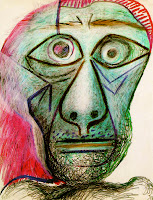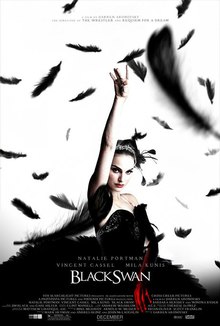The Color of Pomegranates,is a movie that was directed by Sergei Parajanov, essentially, it is an abstract illustration that follows different aspects of Sayat Nova's life and poetry. The movie itself is heavily garnished with very detailed imagery that is fueled by deep Armenian and Christian symbolism. There are many symbols of death in the beginning of the movie, such as the dying fish and the pomegranate stained knife. These images of death are juxtoposed with different symbols of Christianity such as the Bible and the twisted image of the thorns, the juxstaposition of these assorted images elude to both a strong Christian perspective and also forshadow a christlike sacrifice Sayat Nova will have to make.
The strong Christian imagery leads the viewer through the beginning sequence to Sayat Nova's childhood. The second part of the movie initiates itself by reciting a select few of the first couple passages from the New Testament, "In the beginning, god created the heavens and the earth. On the sixth day, god said, Now we shall create man according to our image and likeness. And God created man according to his image. According to his image God created him." Parajanov uses this reciteation in order to simulate both his birth physically in a literal manner and also serves as to illustrate the birth of his Christian faith. His lifes purpose is also stated in this revisitation of biblical text, "God took the Man he created and made him live in the Garden of Eden, so that Man would till the earth and tend the Garden." This quote is paired with images of piled books, this combonation of text and images illustrates his purpose in life as learning about Christ. He is supposed to tend to his knowledge of the bible just as Adam was to tend the Garden of Eden. However, I find it somewhat ironic that Adam was cast from the Garden of Eden because of his lust for knowledge and Nova is called to aquire this knowledge as a lifetime pursuit.
The next part of the movie's imagery mostly focuses on books and the importance of their preservance. Sayat States " For books are Soul and Life. Without books, the world would have wintnessed nothing but ignorance" In this scene, the young poet puts his hand in the hand of an older man and the older man passes the books that he has to Nova. This action symbolizes Nova's responsibility at a young age to seek biblical knowledge and to pass that knowledge onto other people. After this he carries a book almost as big as him, up to the roof. This pursuit is remenicent of the crucifixtion and when Jesus had to carry his cross into Jerusalem. The book itself symbolizes the knowledge of that he must be a martyr and have to give up his life for his religion. After he is finished looking at the iconic pictures in the bookhe lies down on the roof almost pacifistically with his arms streched, surrounded by many books on the roof with pages flapping in the wind. This imagery demonstrats the understanding of this knowledge, and the overall acceptance of his own fate.
The next section of the film displays a specified process in making cloth, more specifically ornately decorated Armenian rugs, this process is narrative to Nova's Armienian heritage. Furthermore, the use of "three's" in certain frames consistantlly reappears, especially in this scene. The use of this can be speculated as both a compositional tool and yet another Christian symbol, as the trinity. This scene is also accented very heavily in the color red and displays many dead chickens. Chickens, are considerd purified creatures in the Hindu culture. Sergei Parajanov uses this initially Hindu symbol and twists it in order to represent enlightenment of a holy Christian lifestyle and Nova's ability to see light and truth.
Even though I have only lightly began to search for the complex allegories and symbolism, Sergei Parajanov creates. I have been able to find an extreme amount of imagery and symbolism. This movie is true genius and must have taken an immensly long time to create all of the images that Parajanov uses. I admire his ability to string these abstract images together in order to create such a strong dialog of Sayat Nova's life.








